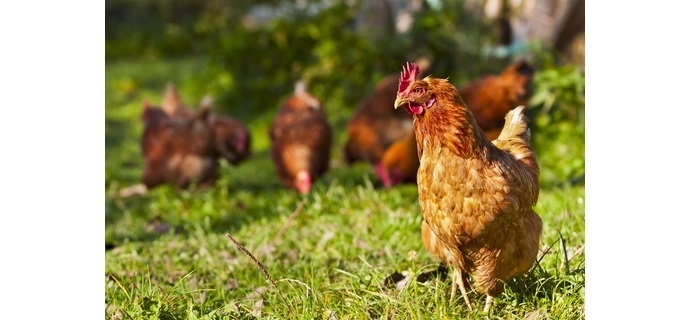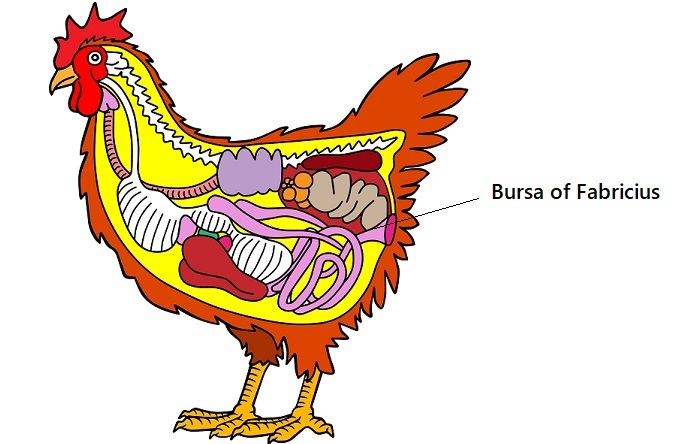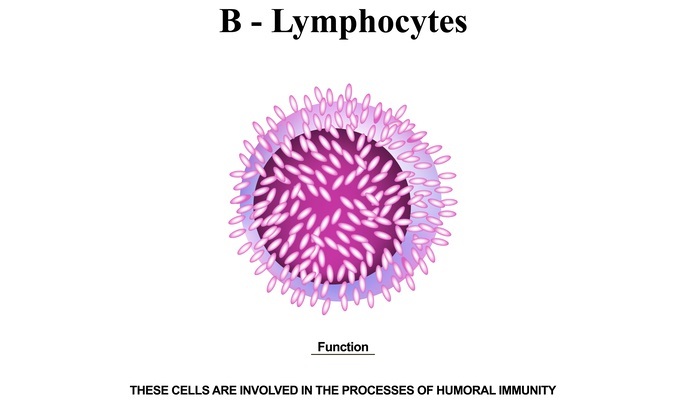
 Data Structure
Data Structure Networking
Networking RDBMS
RDBMS Operating System
Operating System Java
Java MS Excel
MS Excel iOS
iOS HTML
HTML CSS
CSS Android
Android Python
Python C Programming
C Programming C++
C++ C#
C# MongoDB
MongoDB MySQL
MySQL Javascript
Javascript PHP
PHP
- Selected Reading
- UPSC IAS Exams Notes
- Developer's Best Practices
- Questions and Answers
- Effective Resume Writing
- HR Interview Questions
- Computer Glossary
- Who is Who
Bursa of Fabricius: Site of Hematopoiesis in Birds
Introduction
The Bursa of Fabricius, also known as the Bursa cloacae or simply the Bursa, is a unique organ found only in birds. It is located in the cloaca, which is the common opening for the digestive, urinary, and reproductive systems in birds. The Bursa is an important site of hematopoiesis in birds, meaning that it is responsible for the production of blood cells.
The Bursa was first described by the Italian anatomist Hieronymus Fabricius ab Aquapendente in the late 16th century. Fabricius was studying the anatomy of chickens when he discovered this small, pear-shaped organ in the wall of the cloaca. At the time, he had no idea what the function of the Bursa was, but he recognized that it was a unique structure that was not found in other animals.

Over the years, scientists have discovered that the Bursa plays a vital role in the development of the avian immune system.
Anatomy of the Bursa of Fabricius
The Bursa of Fabricius is a small, sac-like organ that is located in the wall of the cloaca. It is present in all birds, from the smallest songbirds to the largest ostriches. The size and shape of the Bursa vary depending on the species of bird. In general, the Bursa is larger in young birds and decreases in size as the bird matures.
The Bursa is made up of two layers of tissue: an outer layer of connective tissue and an inner layer of epithelial tissue. The epithelial tissue is composed of lymphoid follicles, which are clusters of lymphocytes (a type of white blood cell).
These lymphoid follicles are arranged in a honeycomb-like pattern and are surrounded by a network of blood vessels and nerves.

Function of the Bursa of Fabricius
The Bursa of Fabricius plays a critical role in the development of the avian immune system. Specifically, it is responsible for the production of B lymphocytes, which are a type of white blood cell that produces antibodies.
Antibodies are proteins that help the body to recognize and destroy harmful pathogens, such as bacteria and viruses. The development of B lymphocytes in the Bursa begins early in embryonic development and continues throughout the first few weeks of life.
During this time, the lymphoid follicles in the Bursa are populated with immature B lymphocytes, which are then stimulated to mature and produce antibodies. The Bursa is also involved in the selection of B lymphocytes that are capable of recognizing and responding to specific antigens (foreign substances).
This process, known as clonal selection, ensures that the immune system is able to recognize and respond to a wide range of pathogens.
Importance of the Bursa of Fabricius in Bird Health
Production of B Lymphocytes
The Bursa of Fabricius is the site of B cell development in birds. B cells are a type of white blood cell that are responsible for producing antibodies, which are proteins that recognize and neutralize specific pathogens.
B cells are produced from hematopoietic stem cells, which are immature cells that have the potential to develop into any type of blood cell. In the Bursa, hematopoietic stem cells differentiate into pro-B cells, which then mature into pre-B cells and finally into mature B cells. During this process, B cells undergo a series of genetic rearrangements that enable them to produce a diverse range of antibodies, each capable of recognizing a specific pathogen.
The Bursa of Fabricius is critical for the development of these B cells. If the Bursa is removed from a young bird, the bird will be unable to produce B cells, resulting in a severely compromised immune system. This underscores the importance of the Bursa in the development of the avian immune system.

Development of Immune Tolerance
The Bursa of Fabricius also plays a critical role in the development of immune tolerance in birds. Immune tolerance is the process by which the immune system learns to distinguish between self and non-self antigens.
Antigens are molecules that can trigger an immune response, such as proteins on the surface of a virus or bacteria. During B cell development in the Bursa, immature B cells are exposed to self-antigens. B cells that recognize and respond to self-antigens are eliminated through a process known as clonal deletion. This helps to ensure that the immune system does not attack the body's own cells and tissues, which would result in autoimmune disease.
The Bursa of Fabricius is not the only organ involved in the development of immune tolerance in birds, but it is a critical one. Birds that lack a functional Bursa, such as those that have had it surgically removed or those that are born without one, are unable to develop immune tolerance and may develop autoimmune diseases.
Role in Avian Diseases
The Bursa of Fabricius is also important in the context of avian diseases. Many infectious diseases that affect birds target the immune system, and the Bursa is often a primary site of infection.
For example, infectious bursal disease (IBD) is a highly contagious viral disease that affects the Bursa of Fabricius in young chickens, causing severe damage to the organ and leading to immunosuppression.
Other diseases that affect the Bursa include Marek's disease, which is caused by a herpesvirus that targets lymphoid cells, including those in the Bursa, and avian leukosis, a retroviral disease that can lead to lymphoid tumors in the Bursa.
Overall, the Bursa of Fabricius plays a critical role in the development of the avian immune system, ensuring that birds have a diverse and effective immune response to pathogens. It is also important for the development of immune tolerance, which helps to prevent autoimmune disease.
However, the Bursa is vulnerable to infection by a range of avian diseases, highlighting the importance of maintaining its health and function in order to ensure the health and survival of birds.

